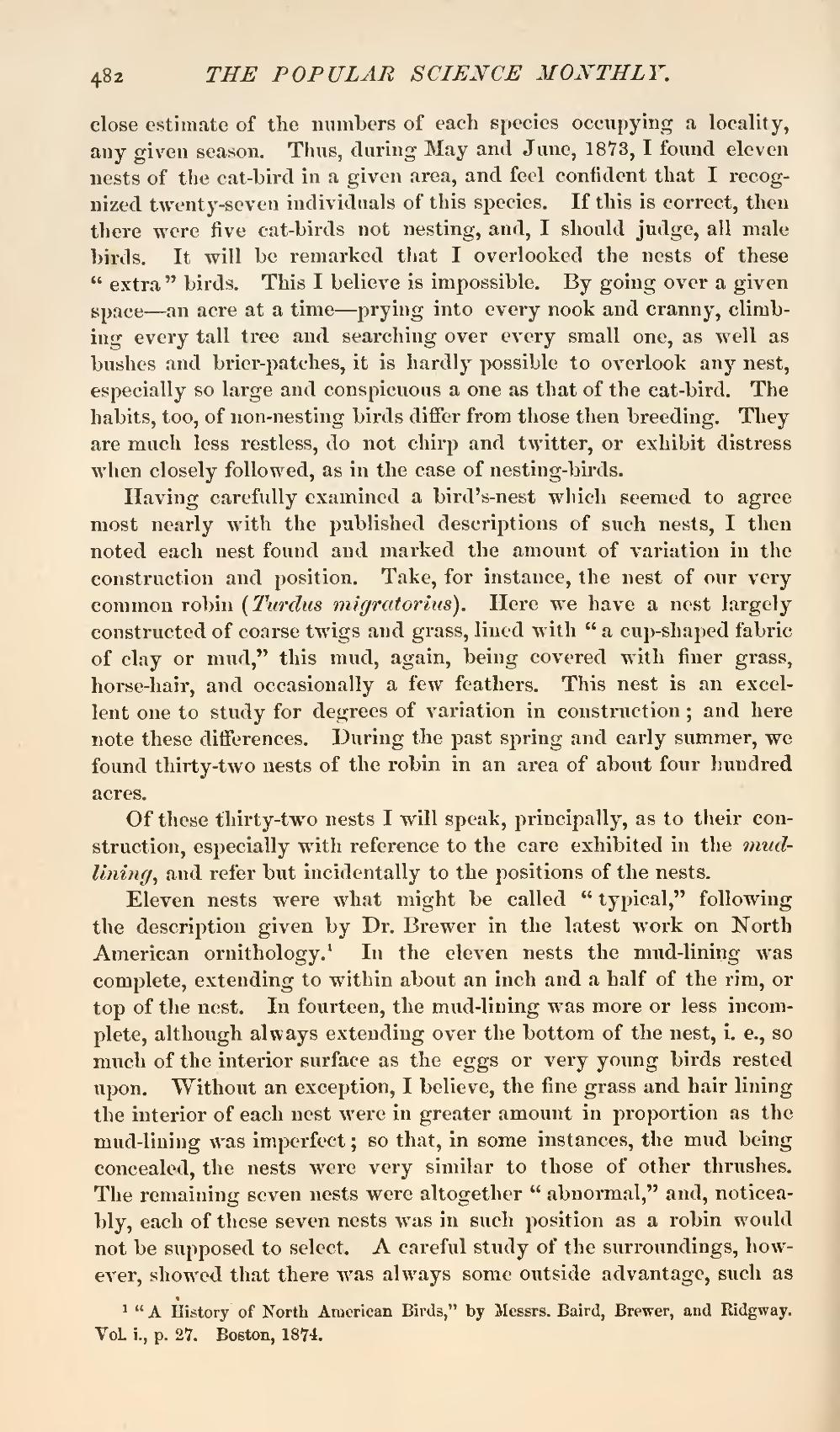close estimate of the numbers of each species occupying a locality, any given season. Thus, during May and June, 1873, I found eleven nests of the cat-bird in a given area, and feel confident that I recognized twenty-seven individuals of this species. If this is correct, then there were five cat-birds not nesting, and, I should judge, all male birds. It will be remarked that I overlooked the nests of these "extra" birds. This I believe is impossible. By going over a given space—an acre at a time—prying into every nook and cranny, climbing every tall tree and searching over every small one, as well as bushes and brier-patches, it is hardly possible to overlook any nest, especially so large and conspicuous a one as that of the cat-bird. The habits, too, of non-nesting birds differ from those then breeding. They are much less restless, do not chirp and twitter, or exhibit distress when closely followed, as in the case of nesting-birds.
Having carefully examined a bird's-nest which seemed to agree most nearly with the published descriptions of such nests, I then noted each nest found and marked the amount of variation in the construction and position. Take, for instance, the nest of our very common robin (Turdus migratorius). Here we have a nest largely constructed of coarse twigs and grass, lined with "a cup-shaped fabric of clay or mud," this mud, again, being covered with finer grass, horse-hair, and occasionally a few feathers. This nest is an excellent one to study for degrees of variation in construction; and here note these differences. During the past spring and early summer, we found thirty-two nests of the robin in an area of about four hundred acres.
Of these thirty-two nests I will speak, principally, as to their construction, especially with reference to the care exhibited in the mudlining, and refer but incidentally to the positions of the nests.
Eleven nests were what might be called "typical," following the description given by Dr. Brewer in the latest work on North American ornithology.[1] In the eleven nests the mud-lining was complete, extending to within about an inch and a half of the rim, or top of the nest. In fourteen, the mud-lining was more or less incomplete, although always extending over the bottom of the nest, i. e., so much of the interior surface as the eggs or very young birds rested upon. Without an exception, I believe, the fine grass and hair lining the interior of each nest were in greater amount in proportion as the mud-lining was imperfect; so that, in some instances, the mud being concealed, the nests were very similar to those of other thrushes. The remaining seven nests were altogether "abnormal," and, noticeably, each of these seven nests was in such position as a robin would not be supposed to select. A careful study of the surroundings, however, showed that there was always some outside advantage, such as
- ↑ "A History of North American Birds," by Messrs. Baird, Brewer, and Ridgway. Vol. i., p. 27. Boston, 1874.
